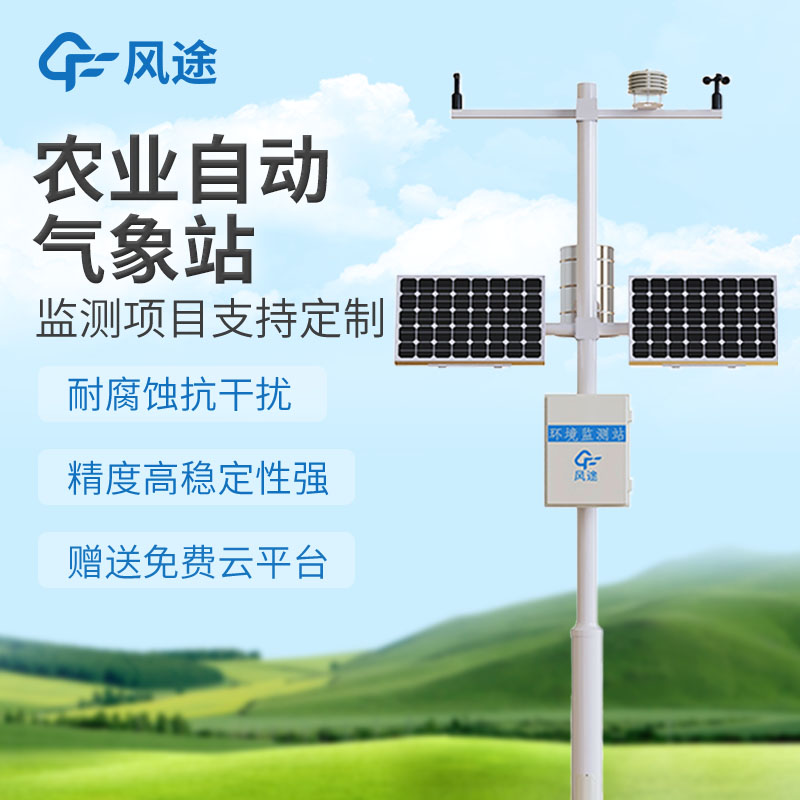Agricultural Weather Stations are composed of five parts: meteorological sensors, a collector, a power supply system, a vertical pole bracket, and a cloud platform. They usually adopt an integrated design. The appearance takes the vertical pole bracket and the protective box as the core, combined with the sensor module and the solar power supply system. The overall structure is relatively compact, and they are installed in agricultural production areas such as farmlands, orchards, and tea gardens.
There is a vertical pole bracket, which is about 2 to 3 meters in height and is used to support devices such as meteorological sensors and collectors.
The sensor part is installed on the top or side of the bracket, including wind speed and direction sensors, temperature and humidity sensors, rainfall sensors, etc., with different shapes. For example, a wind speed sensor is generally composed of wind cups and a rotating shaft. The wind cups rotate under the action of the wind, and the wind speed is calculated by measuring the rotation speed. Temperature and humidity sensors are mostly small probes or modules. A rainfall sensor is usually a bucket-shaped device used to collect rainwater and measure the rainfall amount.
The collector is installed in the middle or at the bottom of the vertical pole bracket. It is usually a small box with a display screen and buttons, which is used to collect and process the data transmitted from the sensors.
The main machine regularly reads data from each sensor, conducts preliminary verification and conversion, and then uploads it to the management cloud platform. The cloud platform cleans, integrates, and analyzes the data, and generates meteorological charts, reports, etc.
The power supply system is basically a solar panel, which is installed on the top of or beside the bracket. It is connected to the collector and sensors through the cables on the bracket, providing power support for the entire weather station.
Manufacturers use Internet of Things technology to achieve seamless docking between the weather station, intelligent devices, and the cloud platform. Common communication methods include GPRS, Bluetooth, wired transmission, RJ45 Ethernet, etc., and can be selected according to actual needs.

Article address:https://www.sqqx.net/en/news/597.html

 +86 15898932201
+86 15898932201



